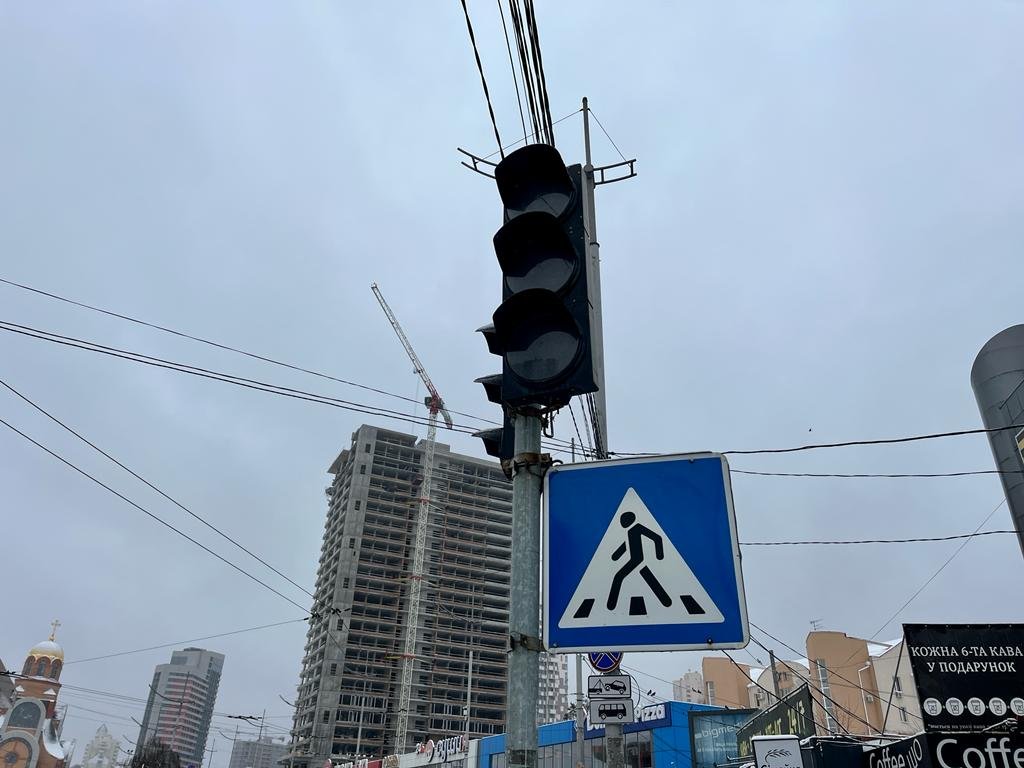Back in December Spearfish’s Ukrainian country specialist went back to Ukraine for the first time since the war began in February. Read how he navigated his way from across the Polish boarder to Lviv, Kyiv and then Dnipro.
Dnipro
The situation in Dnipro is clearly more tense than that of Kyiv and Lviv. The city acts as a hub for many military units heading further east to the front line, and thus soldiers (mostly unarmed) are a common sight on the streets, particularly around the train and bus stations. A number of sites in the city centre have been visibly hit by Russian missiles, such as the Ukrainian Security Service building. Government buildings are more heavily guarded by law enforcement and some adjoining roads have had access restricted. Nonetheless, the streets are still busy with people, and many aid organisations (both domestic and international) and journalists have situated themselves in Dnipro for easier access to the Donbas.
Power cuts, both scheduled and unscheduled, are now a common occurrence in Dnipro. Scheduled power cuts rotate around different districts of the city every 4-8 hours. However, some people complained that even this week they have been without electricity and water for 4 days straight. Street lighting and traffic lights are often without power, leaving cars and pedestrians in the dark at night and increasing the risk of traffic collisions at crossroads, which are now common. Thus is it advisable to wear reflective clothing and have a head torch to hand when on foot after dark. Many locals avoid using lifts so as to avoid potentially becoming stuck for hours. Some businesses are lucky enough to have backup power, such as generators, but many are forced to temporarily close. During power outages, some bars and restaurants close their doors, while some try to work by candle light.
The curfew in Dnipro city is enforced between 00:00-05:00. In the rest of the region outside the city it starts at 23:00. Street crime has not been reported by locals to have increased, and martial law brings with it an increased police and military presence. That being said, it is noticeable that some people and businesses have heightened their awareness vis-a-vis crime.
Dnipro tends to have more air raid sirens than Kyiv and Lviv, although they are still generally ignored. Unlike some previous months, the audible street siren will sound for three minutes and then stop for the remainder of the alert (potentially hours), in order to avoid disturbing the population. People rely mainly on mobile apps for alerts of air raid sirens. The locals’ biggest fear is not the danger from the strikes themselves, but the impact they will have on heating and electricity.
Dnipro Train Station
Russian remains the most common spoken language in Dnipro, although as in Kyiv and Lviv the written language (road signs, advertisements, general information) is almost exclusively in Ukrainian. The level of English is, in general, slightly poorer than in Lviv and Kyiv, even in some hotels. The link between language and politics is controversial: some of the most ardent Ukrainian patriots are Russian-speakers. However, there is in Dnipro an increased anxiety about fifth columnists sharing information with the Russian military. As such, one should be extremely careful when taking photos around the city, particularly near any government buildings.
Dnipro clearly remains a functional city, even if it has changed somewhat since February. Law and order remains unchallenged and as a result businesses continue to adapt and endure. While power cuts remain a challenge, Dnipro and “Dnipraniye” (local residents) are demonstrating their resilience while supporting the efforts further east.
How can Spearfish support you?
If your organisation is looking to operate or have a trip planned in Ukraine Spearfish can support you duty of care needs.



